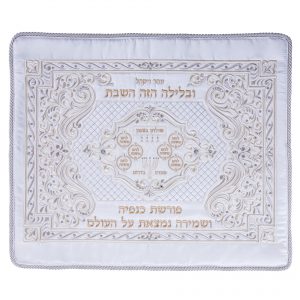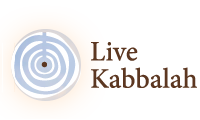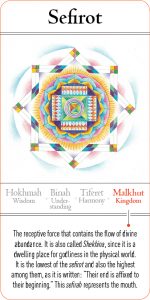Rosh Hodesh – Hebrew Astrology & The Biblical Zodiac
Jewish Holidays
Hilullah – Death Anniversary of the Great Sages
Kabbalistic Astrology Chart Reading
The Hebrew Calendar According to Kabbalah
The Hebrew calendar is based on the concept of ancient Hebrew Astrology. This worldview assumes that the movement of heavenly bodies reflects changes in invisible spiritual forces that affect ones’ feelings, emotional reactions, luck, and many other factors. The Jewish calendar is similar to a topographical map that indicates the properties of the area. Upon choosing the right path and how we should move on it, as well as, where to find points controlling the area, and where water can be found, so too the Jewish calendar, according to Kabbalah, is a tool for understanding the dimension of time in which we live. What the forces are that control each and every moment of the day and how we can exploit the structure of time to meet our needs are built into the calendar as well. As a navigator that would not embark on a navigational journey in the forest, sea, city or desert without learning the map and planning the route in advance, the Kabbalist would examine the Hebrew calendar – the timetable of the forces that accompany him on his path at every stage.
The Astrological Code of the Holidays
The Zohar teaches us that just as a person’s face can show us his feelings and thoughts, even though they are in his heart and mind, they will reflect on his face. In the same way, the sky and the heavenly bodies can show us the “state of mind” of the universe in which we live.
The Lunar/Solar Calendar
The Hebrew calendar is a Lunar/Solar calendar (like most calendars of the Far-East), based on both cycles of the Sun as well as the Moon. The months are calculated according to the moon, while the years and seasons are calculated according to the sun. To adapt the lunar calendar (355 days in 12 moons) to the solar calendar (365 days a year) there are seven ‘leap years’ in each cycle of 19 years, in which the month of Adar II is added. Each month includes 29 or 30 days (the lunar cycle is 29.5 days) and begins with the birth of the New Moon.
In this way, the Hebrew calendar differs from the Western Gregorian Calendar, which is only solar, and from the Muslim calendar, which is only lunar. On the other hand, the Chinese calendar and the Indian calendar (as many other calendars of the Far East), which are also based on the worldview of astrology, are Lunar/Solar.
Why is it important to calculate the times according to the sun and the moon?
According to Kabbalah, the Moon represents humanity, which is considered the female side of creation. Just as the moon has no light of its own, but it returns the light of the Sun, so too we have no light of our own and the light that we have is achieved when we act in our reality by reflecting the light of the Creator. We do that by giving and sharing with others.
The Sun symbolizes the light of the Creator, the masculine side of Creation, infinitely and unconditionally abundant, and above time and space. The connection between the rhythms of the Sun and the Moon symbolize the daily work of each person – to connect in each act, the Creator’s light (the power of giving, the Sun) with the creative force of nature and humanity (power of receiving, the Moon).
The Hebrew calendar as a Road Map
The Hebrew calendar is a spiritual calendar designed to serve as a daily guide to help us identify the laws of the universe so that we can control the processes that happen to us in our lives and achieve more efficiency in every field.
The wisdom of Kabbalah teaches us that cosmic cycles have a tremendous impact on our lives, and that every day the universe has different combinations of forces that influence the feelings, thoughts and actions of each of us and that each hour has a different meaning. The Holy Ari says that every day is a new day, which has not existed since the Days of Creation, and will never exist again. Every day there are opportunities for discovery, repair, and creativity that are unique to that day and which will not return. Every month has its’ own strengths and every week and every year there are different spiritual frequencies at play. Kabbalah teaches that understanding the Hebrew calendar will help us understand how, according to the spiritual frequency that dominates the universe at certain times, it is possible to identify days or periods in which it is recommended to start new things – such as marriage, starting a business, buying a house, a new beginning and reconsideration of the decisions we made (Counting the Omer and the Three Weeks, for example). In other words, understanding the calendar according to Kabbalah is not only a means of organizing time, but rather serves as an orientation guide that can help us overcome invisible obstacles and exploit spiritual energy available for success on the path to realizing our spiritual and physical goals.
The Hebrew calendar is based on the structure of the zodiac.
The understanding of the zodiac can add a great deal to understanding the meaning of the holidays that appear in the Hebrew calendar. The meaning of the Hebrew months is also based on astrology. Understanding the Hebrew calendar requires a deep knowledge of astrology despite the preconceptions that say that Judaism denies astrology.
The Talmud & Astrology
In the Talmud (Tractate Shabbat) there are many discussions about the wisdom of astrology, the two sources of which are among the most famous are as follows:
Rabbi Shimon ben Pazi said: “Rabbi Yehoshua ben Levi said of Bar Kappara, ‘Anyone who knows how to calculate periods and zodiac signs and does not, it is about him that the verse says: ‘but they pay no attention to how God works and never look at what his hands have made.” (Isaiah 5:12)
Rabbi Shmuel bar Naḥmani said in the name of Rabbi Yoḥanan, “where does it say that a person has to calculate periods and zodiac signs? As it says: ‘And you shall observe and do, for it is your wisdom and your understanding before the eyes of the nations.’ What wisdom and understanding is it in the eyes of the nations? This is the calculation of periods and zodiac signs. “
From here we learned that the Talmudic sages viewed the calculation of stars and the signs as a Mitsvah (Precept). Many Halakhic Sages considered the study of astrology (Jewish, of course) as one of the 613 Mitsvot (Precepts) until about a thousand years ago.
Rabbi Ḥaninna says: Mazal (An Astrological Sign) is the cause for one’s wisdom; Mazal is the cause for the person’s good fortune and the people of Israel are influenced by Mazal (Astrological Signs).
Rabbi Yoḥanan said that there is no Mazal (Astrological Sign) [effecting] Israel. As it is said, “Here is what God says: ‘Don’t learn the way of the nations, don’t be frightened by astrological signs, even if the nations are afraid of them…’ (Jeremiah 10:2).”
Rav Yehuda said that Rav said: “Where does it say that there no Mazal (An Astrological Sign) for Israel? As it is said, ‘And he took him out’(Genesis 15:5)”
Abraham said before the Holy One, Blessed is He, “my servant inherits me”. The Creator answered: “No, the one who comes out of your loins, he will inherit you”. He said before Him, “Master of the Universe, I have looked at my own astrological chart and I am not meant to have a son”. Said the Creator “get out of your astrology, there is no Mazal (Astrological influence) for Israel. “
Whether or not we are limited by the influence of the stars is dependent on how observant we are of the Creators’ precepts.
This discussion continues along the Tractate of Shabbat.
The Ari explains that the holidays, Shabbat, Rosh Ḥodesh and other special occasions are gates of time that we can enter and draw from them a power of abundance and blessing for our lives.
Rosh Ḥodesh – The New Moon
Rosh Ḥodesh is the first day of the New Moon, or close to it, and in essence it serves as a kind of seed of a tree that contains the knowledge and the power that determines how the tree will grow. Similarly, you can understand how our actions on Rosh Ḥodesh can affect the entire month. Kabbalists teach us how to attract abundance and blessings and to gain more control over what happens to us during the month through the tools of awareness, intention, meditation and certain actions. In fact, almost every Rosh Ḥodesh is recommended for new beginnings (see Shabtai Donolo in his commentary to Sefer Yetsira, which says that the entire first half of the month is recommended for new beginnings), except Rosh Ḥodesh Av (until 10th of Av) when there are forces that can delay or make it difficult for us to decide or act. These days require self-reflection and spiritual work rather than business breakthroughs.
The Sefer Yetsirah (Book of Formation, which is attributed to Abraham the Patriarch), teaches us that the Hebrew letters are used as tools for the transmission of spiritual abundance. Two Hebrew letters influence each month. One letter controls the ruling planet of that month and the second letter controls the astrological sign of the month. Through meditation and intention you can use the letters of the month and draw positive forces for the whole month. It is recommended to use the meditation of the letters of the month every day of the month starting from the beginning of the month.
The Days of the week & their Energy
In the interpretation of the Zohar HaSulam (Ki Tetse, verse 126) it is said that we should not begin on the second and fourth [days of the week]. That is, new things are not to be started on Monday’s and on Wednesday’s of the week. The second day is the day on which separation and friction were created in the six days of creation. Therefore, it is not said “that is good” on that day.
On the fourth day of the six days of Creation there was another separation (the scarcity of the Moon) and therefore on this day there is a defect that can damage new beginnings. For this purpose, it is important to remember that the “day” in the Hebrew calendar starts at sunset of the previous day and therefore Tuesday evening is already considered Wednesday.
 Shabbat
Shabbat
The blessing stored on Shabbat affects all six days of the week. Connecting to the blessing and the abundance of Shabbat will provide us with tremendous power to remove the chaos from the root of the following week, and to improve our achievements in it significantly.
In the book Sha’ar HaKavanot (The Gate of Meditations), the Ari explains that before Friday afternoon, the frequency of the reality in which we live is changing. Olam Asiyah (The World of Action – the consciousness of reality) rises to the higher worlds and the power of Shabbat begins to enter the universe. Shabbat enables us to ascend to levels of consciousness and light that are especially high and to receive tools to control the physical reality for the rest of the week.
Holidays
The holidays on the Hebrew calendar are, according to Kabbalah, a unique time in which we can call on the sources of abundance in the upper worlds. Every holiday is unique. For example, on Rosh HaShanah and Yom Kippur we are given the opportunity to connect and influence our lives in the fields of abundance, life energy, livelihood and children. During Pesaḥ we are given the opportunity to influence the aspect of quality of life, conflicts, order and peace. On Sukkot we can attract lights of protection and development forward. On Ḥanukkah and Purim – miracles and wonders, and more.
Second Day of a Holiday
The second day of the festival is designated for people living outside Erets Yisrael. According to Kabbalah, the Land of Israel is the center of holiness and world abundance. Therefore, if a person lives outside the borders of the Land of Israel he is required to make an additional effort to achieve the light of that holiday, as opposed to those who live in the country and therefore able to achieve the light in one day only.
Israeli Jews who reside abroad, who are not permanently there and who have the intention of returning to Israel, are connected more strongly to the power of the Land of Israel and therefore do not need the second day of the holiday.
Ḥol HaMo’ed
These days are included within the holiday. In other words, the light in question exists, but not with the same intensity of the holiday itself.
Positive days – According to Kabbalah
There are days, rich in positive energy, which can and should be used along with the energy they provide for new beginnings. These days are excellent for sowing seeds for anything that has the potential for continuity, such as: a new business, marriage, purchase or sale of assets, and even a date for surgery or medical treatment. In general, one may say that the first day of each month (Rosh Ḥodesh) is a particularly positive day, because it includes the seed for the entire month, and so it is for Rosh HaShana which is the Rosh Ḥodesh of Tishrei. An exception is Rosh Ḥodesh Av, which is inside of the 3 weeks. Additionally, days such as Lag Ba’Omer, have extraordinary positive energy because it is the day of Hillulah (Yahrtzeit) of a great Sage and his departure corrects the negativity of that day.
Negative days – According to Kabbalah
Negative days mean that energy decreases, or that there are strong disturbances that can endanger activity that requires concentration, positive force, and harmony. To achieve more success in life, you should avoid new beginnings these days. But it is clear that when the forces in the universe do not work for our benefit, then it is not advisable to start a new initiative or carry out plans, thoughts, or any other initiative. This does not mean that it is not possible to achieve success these days with regard to projects that started earlier, but to be careful not to fall into the traps of anger, confusion, despair and lack of energy that existed in those days.
Days of Hillulah – Anniversary of the Higher Souls
According to Kabbalah, the day of the departure of a Tsaddik (a righteous person) from the world is a day in which everything that he created in his life is revealed, and every year on the day of his death, his soul returns to the world and with it the spiritual strength and spiritual achievements that the Tsaddik has discovered in his life.
In the days of the Hillulah, powerful spiritual energy can be revealed, which can turn a day which is negative from six days of creation, to a positive day until the end of all generations. The way to connect with the forces that the Tsaddik brings to the world on the day of his Hillulah is:
A. Lighting a candle in his/her memory.
B. The study of books he wrote (if we do not have his books at hand, we can read the Zohar in his memory).
C. Making a Se’udah (a festive meal) in his/her memory
You do not have to do all of the above, and one of the three options will usually suffice.
For further study and hearing lectures on “Gates in Time” (holidays, new heads, bible revelations, etc.), you can enter Live Kabbalah University.

